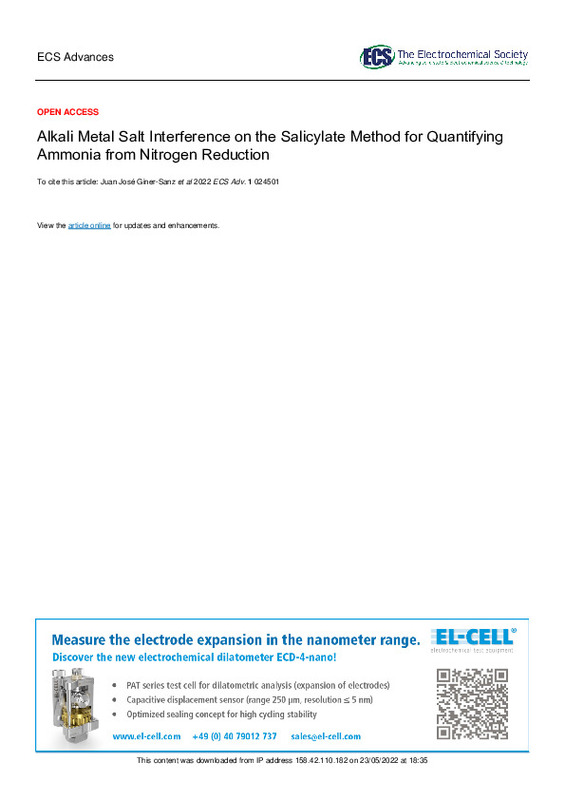JavaScript is disabled for your browser. Some features of this site may not work without it.
Buscar en RiuNet
Listar
Mi cuenta
Estadísticas
Ayuda RiuNet
Admin. UPV
Alkali Metal Salt Interference on the Salicylate Method for Quantifying Ammonia from Nitrogen Reduction
Mostrar el registro completo del ítem
Giner-Sanz, JJ.; Leverick, G.; Giordano, L.; Pérez-Herranz, V.; Shao-Horn, Y. (2022). Alkali Metal Salt Interference on the Salicylate Method for Quantifying Ammonia from Nitrogen Reduction. ECS Advances. 1(2):1-13. https://doi.org/10.1149/2754-2734/ac6a68
Por favor, use este identificador para citar o enlazar este ítem: http://hdl.handle.net/10251/197080
Ficheros en el ítem
Metadatos del ítem
| Título: | Alkali Metal Salt Interference on the Salicylate Method for Quantifying Ammonia from Nitrogen Reduction | |
| Autor: | Leverick, Graham Giordano, Livia Shao-Horn, Yang | |
| Entidad UPV: |
|
|
| Fecha difusión: |
|
|
| Resumen: |
[EN] The salicylate method has been extensively used for quantifying ammonia in the emerging field of nitrogen (electro)fixation. Alkali metal salts are widely used as supporting electrolytes for nitrogen reduction, ...[+]
|
|
| Palabras clave: |
|
|
| Derechos de uso: | Reconocimiento (by) | |
| Fuente: |
|
|
| DOI: |
|
|
| Editorial: |
|
|
| Versión del editor: | https//doi.org/10.1149/2754-2734/ac6a68 | |
| Código del Proyecto: |
|
|
| Agradecimientos: |
This work was supported by the Toyota Research Institute through the Accelerated Materials Design and Discovery program.J.J.G.S. is very grateful to the Generalitat Valenciana and to the European Social Fund, for their ...[+]
|
|
| Tipo: |
|









